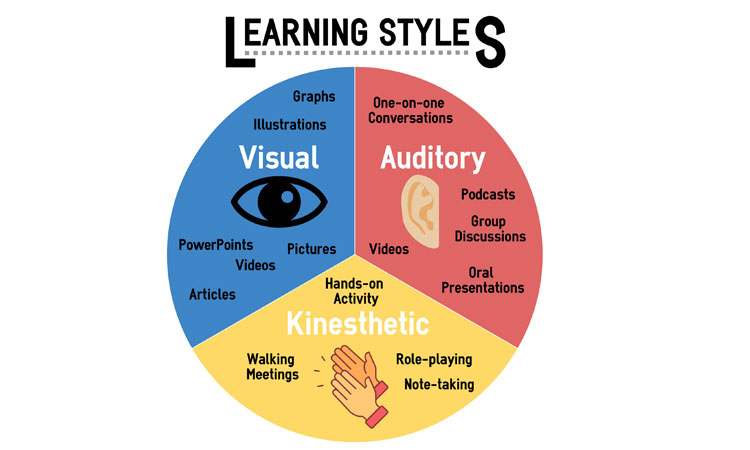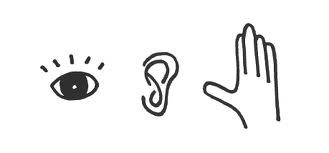
Identifying your Learning Style

There are a number of different learning styles and learning preferences. The most common 3 styles include Visual Learning Style (the most common), Auditory Learning Style and Tactile (Kinesthetic) Learning Style. Additional learning styles and preferences include Logical (mathematical), Social (interpersonal) and Solitary (intrapersonal). Some people may find that they have a dominant style of learning, with far less use of the other styles. Others may find that they use different styles in different circumstances. There is no right mix. Nor are your styles static. You can develop ability in less dominant styles, as well as further develop styles that you already use well.
Visual Learning Style
Individuals who learn best when ideas or subjects are presented in a visual format, whether that is written language, pictures, diagrams or videos are Visual Learners. Visual learners usually learn best when the teacher provides written study notes, writes on the chalkboard and uses an overhead projector to explain concepts. Visual learners frequently take detailed notes in class, when studying from a textbook or listening to lectures. They also create diagrams and use pictures to understand and remember concepts and ideas. If this sounds like you then you are probably a visual learner – many people are.
Auditory Learning Style
If you learn best by participating in class discussion, by listening to your teachers’ lectures, by listening to audio tapes or by listening to other language formats - then you are probably an Auditory Learner. Auditory learners, unlike visual learners, are able to learn, understand and retain information better when they hear it rather than see it.
Tactile Learning Style
Tactile Learners, also commonly referred to as Kinesthetic Learners, are hands-on learners. They learn best when they are able to physically participate directly in what they are required to learn or understand. Tactile learners usually excel when they are able to handle something in order to learn about it. Tactile learners may do especially well in classes where lab work is required. Unlike Visual Learners who learn by seeing and Auditory Learners who learn by hearing, Tactile Learners learn by touching and feeling.
Identifying your learning style is an important part of developing effective study skills and can enhance your unique way of learning leading to better retention and recall during exams. ―